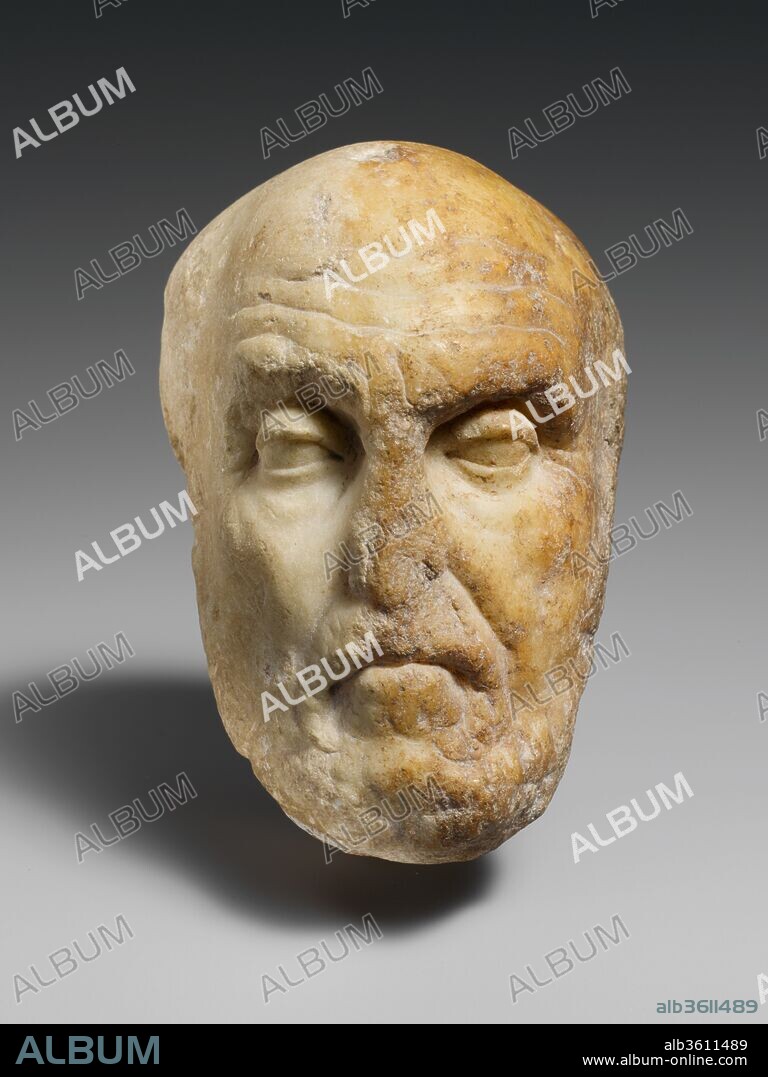alb3611489
Marble portrait head of the philosopher Chrysippos

|
Añadir a otro lightbox |
|
Añadir a otro lightbox |



¿Ya tienes cuenta? Iniciar sesión
¿No tienes cuenta? Regístrate
Compra esta imagen.
Selecciona el uso:

Título:
Marble portrait head of the philosopher Chrysippos
Descripción:
Ver traducción automática
Marble portrait head of the philosopher Chrysippos. Culture: Roman. Dimensions: 5 1/2 in. (14 cm). Date: 1st century A.D..
Copy of a Greek statue of the late 3rd century B.C., probably by Euboulides
Chrysippos was one of the most important Stoic philosophers of the third century B.C. His writings helped establish Stoicism as a major philosophical movement. Stoicism held that human beings should be free from passion and calmly accept all occurrences as the unavoidable result of divine will. The term Stoic derives from the Greek word stoa, a type of colonnaded building in which the philosophers gathered.
It is clear from other copies of this type that Chrysippos was usually represented seated, as a fragile elderly man with his right hand outstretched as if in the midst of making a point. In a manner characteristic of most early Hellenistic art, the viewer would be drawn into the pictorial space and become, as it were, the philosopher's interlocutor. His winning intellect, eloquently conveyed in the features of this head, would have contrasted markedly with his frail old body, emphasizing that the power of the spirit triumphs over physical weakness.
Técnica/material:
MARMOL
Periodo:
Early Imperial
Museo:
Metropolitan Museum of Art, New York, USA
Localización:
ROMAN EMPIRE
Crédito:
Album / Metropolitan Museum of Art, NY
Autorizaciones:
Modelo: No - Propiedad: No
¿Preguntas relacionadas con los derechos?
¿Preguntas relacionadas con los derechos?
Tamaño imagen:
3150 x 4200 px | 37.9 MB
Tamaño impresión:
26.7 x 35.6 cm | 10.5 x 14.0 in (300 dpi)
Palabras clave:
 Pinterest
Pinterest Twitter
Twitter Facebook
Facebook Copiar enlace
Copiar enlace Email
Email
